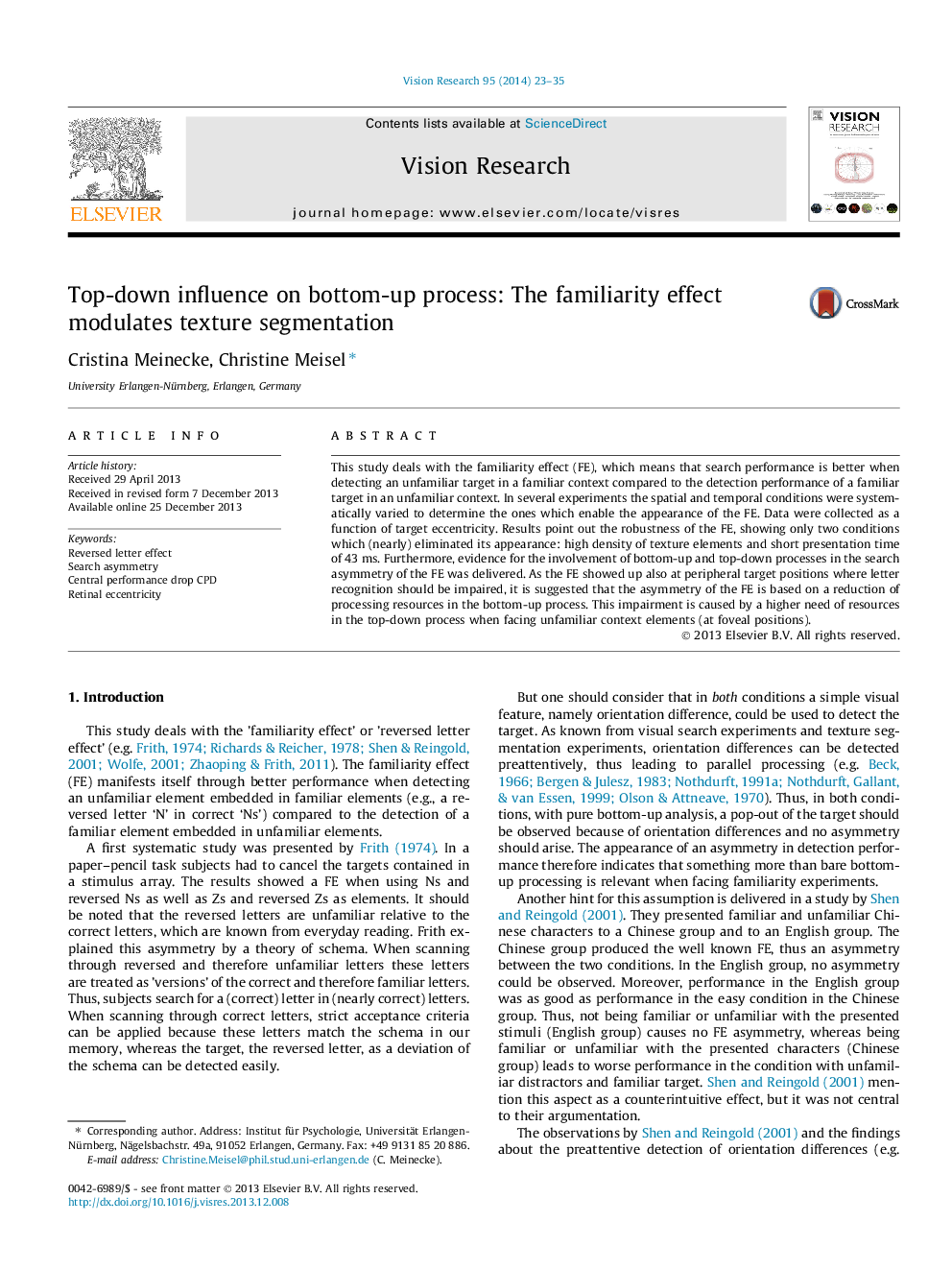| Article ID | Journal | Published Year | Pages | File Type |
|---|---|---|---|---|
| 4033734 | Vision Research | 2014 | 13 Pages |
•The familiarity effect (FE) is analysed in a texture segmentation study.•Spatial and temporal conditions are systematically varied.•Data are presented as a function of target eccentricity.•Results show a rather robust FE. Limiting conditions are high density and short presentation time.•As tentative explanation an influence of top-down processes on bottom-up processes is assumed.
This study deals with the familiarity effect (FE), which means that search performance is better when detecting an unfamiliar target in a familiar context compared to the detection performance of a familiar target in an unfamiliar context. In several experiments the spatial and temporal conditions were systematically varied to determine the ones which enable the appearance of the FE. Data were collected as a function of target eccentricity. Results point out the robustness of the FE, showing only two conditions which (nearly) eliminated its appearance: high density of texture elements and short presentation time of 43 ms. Furthermore, evidence for the involvement of bottom-up and top-down processes in the search asymmetry of the FE was delivered. As the FE showed up also at peripheral target positions where letter recognition should be impaired, it is suggested that the asymmetry of the FE is based on a reduction of processing resources in the bottom-up process. This impairment is caused by a higher need of resources in the top-down process when facing unfamiliar context elements (at foveal positions).
